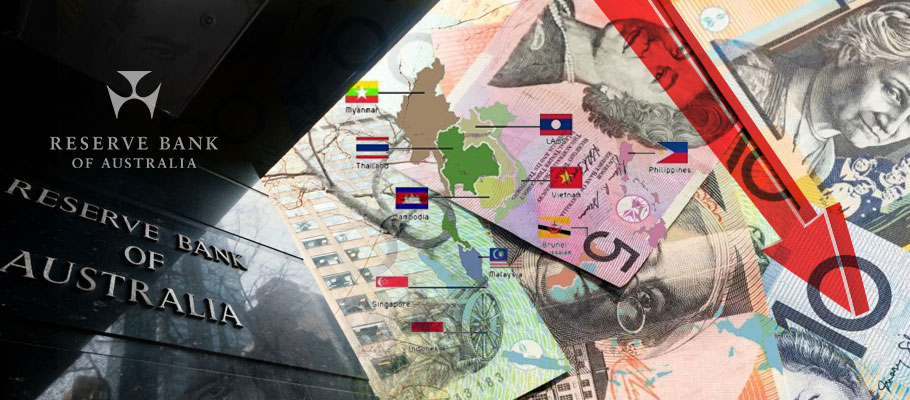
Published: October 4th, 2023
AUD sank in early trading against every G10 major this week, as tepid Chinese equity markets and the Reserve Bank of Australia’s (RBA) decision to hold the line on interest rates cooled enthusiasm for th Down Under Dollar.
At time of writing, analysts were still debating whether Monday’s selloff in Asian stock markets or the RBA's policy update was more to blame the Aussie’s underperformance. The most likely explanation is a blend of both, plus signals from central bank policymakers that rate hike in November probably isn't in the offing.
The RBA held its cash rate at 4.1 per cent for the fourth month running. This was in line with consensus, but guidance from new RBA Governor Michele Bullock suggested the bar has been raised for lifting interest rates any further.
Domestic inflation keeps rising, with the most recent monthly inflation report from August pointing to oil prices as the most likely culprit. Bullock and her team seem unfazed and have kept previous interest rate guidance largely unchanged, with the caveat that central bankers view the uptick in prices as temporary.
If the RBA was to raise rates over the next few months, it would have to give more weight to the current rise in inflation before altering guidance.
That’s why analysts at Westpac believe the bank is so reluctant to lift interest rates again. ‘There wasn't anything in the bank's most recent minutes to suggest the RBA is close to pulling the trigger,’ the bank’s FX Strategy Unit wrote in an analyst note.
At time of writing the AUD/USD exchange rate was 0.80 per cent lower at 0.6312. The GBP/AUD exchange rate had moved 0.65 per cent higher at 1.9114. The Aussie is lower against all its G10 peers, confirming that the weakness is AUD specific.
At this time last year, AUD was also on a trajectory for declines that extended through Q4 2022 and Q1 2023. London analyst house Capital Economics identified two factors weighing on the Aussie in Autumn.
The first was the country's cooling housing market. The second was a breakdown in balance of trade with China as exports began to slow down.
‘We believe Australia’s balance of trade will degrade somewhat as the Chinese economy, and its property sector in particular, continues to slow down,’ said the firm in a research note.
The ebb and flow of Chinese demand remains a crucial driver of economic fortunes down under, as it is the primary destination for Australian exports. If China's economy starts to slow down, it could negatively affect Australia's own growth forecasts.
Capital’s analysts said the volume of commodity exports like iron ore are expected to fall, even as soon as October if current trends continue.
The dour predictions arrived just as AUD had solidified its reputation as one of 2022's top-performing currencies. Only the mighty Greenback and Canadian Loonie performed better.
According to some analysts, part of AUD’s outperformance last year was down to spiking commodity prices, which were aggravated by Russia's invasion of Ukraine, the squeeze on energy supplies caused by Western sanctions, and ensuing supply chain disruption.
Capital Economics also said that the Aussie ‘hadn’t (yet) seen the benefits you would normally expect from the improvement in its balance of trade seen in recent years.'
‘That is probably because of offsetting factors such as shifting yield differentials. As that dynamic isn't providing much support, we believe addition falls in commodity prices will pull the Aussie downward.’
A cooling market in residential housing starts and mortgages also weighed on AUD as the knock-on effects of recent Reserve Bank of Australia (RBA) rate hikes made themselves felt across key sectors.
‘There are unmistakable signs that Australia’s housing sector is starting to slow. Residential construction has dropped by almost seven per cent in Q2 2022, quarter over quarter. Supply shortages may be partly the cause, but the sector is also sensitive to rises in the interest rate. As house prices fell in August at their fastest rate since 1983, we believe it won’t be long before the broader sector finds itself in an extended slump.’
Investors may have been underestimating how soon RBA rate hikes would be reversed, the firm believed, if central bankers in Sydney had been forced to respond to a housing market meltdown.
‘If the experience of past housing downturns is any guide, we believe the RBA will reverse course next year. The extended impact of that will see a fall in Australian government bond yields next year, whcih will exceed the yield drops expected for US Treasuries. Combined it will keep downward pressure on AUD for the coming months.’
Given the periods of outperformance seen in 2022 and 2023, it's easy to forget that AUD started last year as one of the worst-performing majors, hammered by headwinds including a jump in ten-year yields on US bonds, which had risen to their highest levels since February of 2020. The rise in demand for government debt sent most of the world's biggest stock markets into losses.
AUD's 'high beta' status and its historically close connection to shifts in broader risk sentiment means the Australian dollar usually goes up when markets were trending higher. It began to fall again when January’s equities sell-off got underway.
By mid-January 2022, the Australian Dollar to US Dollar exchange rate had fallen by a full third of a percentage point to trade at 0.7185, while the pound to Australian dollar exchange rate lifted by one-quarter of one per cent to reach 1.8969.
Analysts at Bloomberg posted a blog reflecting what many believed at the time: 'markets headed lower as bond yields began to rise. The thing to watch for will be whether or not US stock traders decide that the equities sell-off should continue or ease off.'